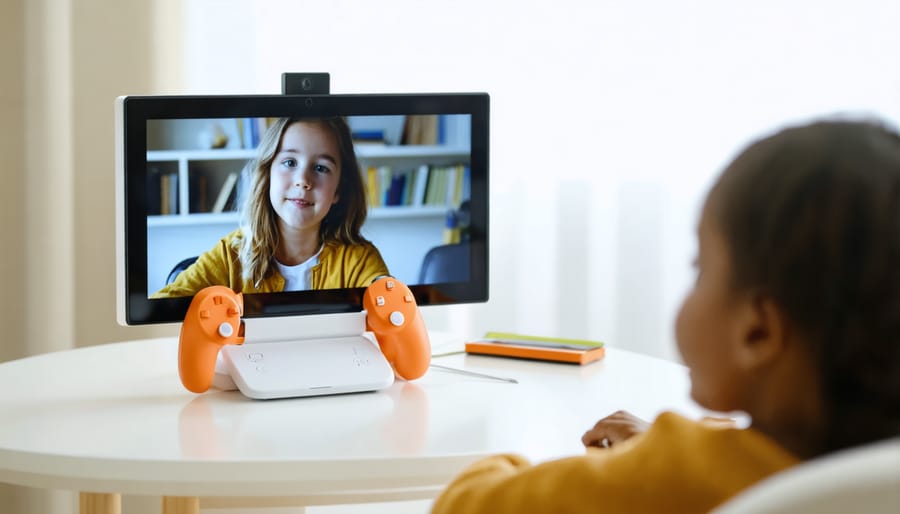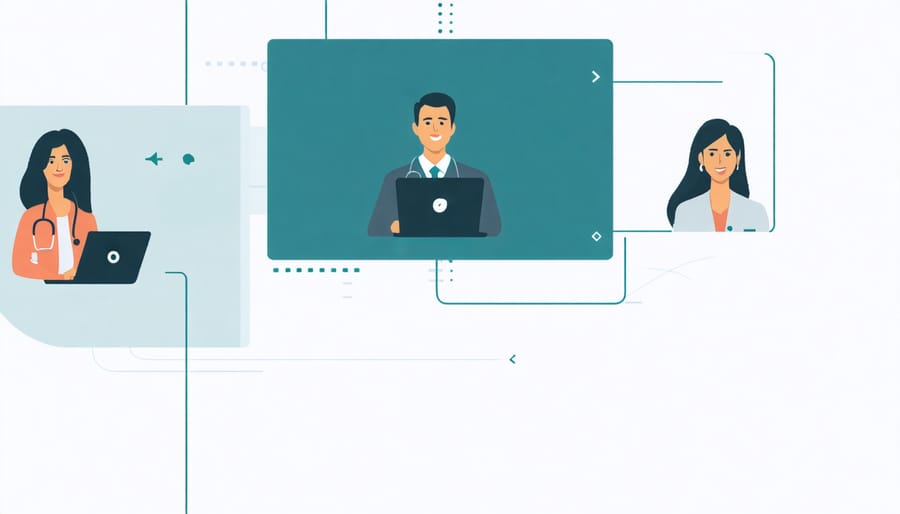Integrating mental health care into primary medical services transforms how we support children’s wellbeing, creating a seamless system where emotional and physical health receive equal attention. Today’s healthcare landscape increasingly recognizes that a child’s mental health directly impacts their physical development, academic success, and family dynamics. Through behavioral health integration services, families can access comprehensive care under one roof, eliminating the traditional barriers between mental health counseling and medical treatment.
This coordinated approach brings together pediatricians, mental health specialists, and family support services to create personalized treatment plans that address the whole child. Research shows that integrated behavioral health services lead to better outcomes, increased treatment adherence, and reduced stigma around mental health care. For parents navigating their child’s mental health journey, this model offers hope, convenience, and evidence-based solutions all in one accessible framework.
By embedding behavioral health professionals directly into primary care settings, we’re not just treating symptoms – we’re revolutionizing how we approach childhood mental health care. This collaborative model ensures early intervention, consistent support, and better communication between all healthcare providers involved in a child’s treatment plan.
Understanding Behavioral Health Integration in Telehealth
Key Components of Integrated Care
Successful behavioral health integration relies on several interconnected components working together seamlessly. At its core, collaborative care teams form the foundation, bringing together primary care providers, mental health specialists, care coordinators, and family advocates who work in harmony to support each child’s well-being.
Regular screening and assessment protocols help identify mental health concerns early, while shared treatment planning ensures all team members are aligned in their approach. A robust care coordination system keeps communication flowing smoothly between providers, families, and support systems, such as schools and community resources.
Technology plays a vital role through integrated electronic health records, secure messaging systems, and telehealth platforms that make care more accessible. Family engagement tools and educational resources empower parents and caregivers to actively participate in their child’s treatment journey.
Evidence-based interventions, outcome tracking, and quality improvement processes ensure that care remains effective and responsive to each child’s unique needs. Cultural competency and trauma-informed approaches are woven throughout these components, creating a comprehensive support system that truly puts children first.
Benefits for Children and Families
Integrated behavioral health services offer remarkable benefits for children and their families, particularly through telehealth platforms. Children can receive care in familiar, comfortable environments – typically their own homes – which helps reduce anxiety and resistance to treatment. Parents appreciate the convenience of not having to take time off work or arrange transportation for multiple appointments.
The coordinated care approach means that mental health professionals work directly with pediatricians and other healthcare providers, ensuring comprehensive treatment that addresses both physical and emotional needs. This integration helps identify potential issues earlier, leading to more effective interventions and better outcomes.
For families in rural or underserved areas, telehealth integration removes geographical barriers to accessing quality mental healthcare. The flexibility of virtual appointments also makes it easier to maintain consistent treatment schedules, which is crucial for long-term success.
Children often respond positively to technology-based interactions, making telehealth sessions engaging and effective. The digital format allows for creative therapeutic approaches, including interactive exercises and educational resources that can be shared instantly with both children and parents. This collaborative approach strengthens family involvement in the treatment process, leading to more sustainable positive outcomes.

How Telehealth Integration Works in Practice
Virtual Care Team Collaboration
In modern behavioral health integration, virtual care teams work together seamlessly across different locations to provide comprehensive support for children and families. These teams typically include primary care physicians, mental health specialists, behavioral health coaches, and care coordinators who communicate regularly through secure digital platforms.
Dr. Sarah Chen, a pediatric mental health specialist, explains, “Virtual collaboration allows us to bring together experts who might be physically scattered across different locations. A child in a rural area can now benefit from the combined expertise of specialists who might be hours away.”
These virtual care teams meet regularly through video conferences to discuss cases, adjust treatment plans, and ensure all providers are aligned in their approach. They use shared electronic health records to maintain up-to-date information about each child’s progress and needs. This digital coordination helps prevent information gaps and ensures consistent care delivery.
For example, when a school counselor notices signs of anxiety in a student, they can quickly connect with the child’s primary care physician and mental health specialist through secure messaging systems. Together, they can develop a coordinated support plan that addresses both the child’s emotional needs and any related physical symptoms.
Parents and caregivers also play an essential role in this virtual collaboration. Through patient portals and telehealth platforms, they can communicate with the entire care team, share observations about their child’s progress, and receive guidance on supporting their child’s mental health journey.
This collaborative approach ensures that every aspect of a child’s well-being is considered, from their physical health to their emotional needs and social development. Regular virtual check-ins and progress reviews help the team adjust strategies as needed, creating a responsive and adaptive care system.

Technology and Tools
Modern behavioral health integration relies heavily on digital platforms for mental health care that make services more accessible and efficient. These tools include secure video conferencing systems for virtual therapy sessions, patient portals for scheduling and communication, and electronic health records (EHRs) that allow seamless information sharing between providers.
Many practices now use specialized apps and platforms designed specifically for children’s mental health care. These might include interactive assessment tools that use child-friendly graphics and games, mood tracking apps that help young patients express their feelings, and secure messaging systems that let parents communicate directly with their child’s care team.
Dr. Sarah Chen, a child psychiatrist, shares, “The technology we use today helps us create a more engaging and comfortable experience for our young patients. Children often feel more at ease using familiar digital tools, which can make therapy sessions more productive.”
Care coordination platforms also play a crucial role, enabling primary care providers, mental health specialists, and school counselors to collaborate effectively. These systems can automatically alert team members about important updates, track treatment progress, and ensure everyone stays informed about a child’s care plan.
For families, patient engagement tools provide resources like educational materials, appointment reminders, and progress tracking features. Some platforms even offer virtual support groups and online workshops where parents can connect with others facing similar challenges.
To ensure privacy and security, these digital solutions incorporate robust safeguards that comply with healthcare regulations while remaining user-friendly for both families and providers.
Supporting Your Child Through Integrated Telehealth Services
Preparing for Virtual Sessions
Setting up a successful virtual behavioral health session requires thoughtful preparation to ensure both you and your child feel comfortable and can fully engage in the experience. Start by creating a quiet, private space where your child won’t be interrupted during their session. This helps build strong family-professional partnerships and maintains confidentiality.
Test your technology at least 15 minutes before the appointment. Ensure your internet connection is stable, your camera and microphone are working, and you’re familiar with the video platform being used. Keep your healthcare provider’s contact information handy in case of technical difficulties.
Help your child feel prepared by explaining what to expect during the virtual session. You might say, “We’re going to talk with Dr. Smith on the computer, just like we do in person.” Consider having comfort items nearby – a favorite stuffed animal or fidget toy can help children feel more at ease.
Set up the camera at eye level and ensure good lighting so the provider can clearly see your child’s facial expressions and body language. Have any necessary materials ready, such as paper and markers for younger children or any worksheets or activities previously discussed with the provider.
Remember to minimize distractions by turning off phone notifications and closing unnecessary browser windows. These small preparations can make a significant difference in the quality and effectiveness of the virtual session.
Building a Supportive Environment
Creating a comfortable and supportive virtual care environment is crucial to help your child feel secure and engaged during behavioral health sessions. Start by designating a quiet, private space where your child can speak freely without interruptions or distractions. This could be a bedroom, study area, or any room where they feel most at ease.
Ensure good lighting and proper technology setup, including a stable internet connection and a device with a clear camera and microphone. Position the device at eye level to promote natural engagement, and consider using headphones to enhance audio quality and privacy.
To support your child’s mental health during virtual sessions, incorporate comforting elements like their favorite stuffed animal, blanket, or fidget toys. These familiar items can help them feel more relaxed and focused during their appointments.
Maintain consistency by using the same space for each session, creating a routine that signals it’s time for their healthcare visit. Consider adding personal touches like artwork or positive affirmations on nearby walls to make the space more inviting and child-friendly.
Remember to respect your child’s privacy during sessions while remaining nearby for technical support or if needed. This balance helps create an environment where they feel both supported and independent in their therapeutic journey.

As we look to the future of children’s mental health care, behavioral health integration in telehealth continues to show tremendous promise. The combination of accessible virtual care and comprehensive mental health support has already transformed how families receive help, breaking down barriers and creating more inclusive care environments.
Healthcare providers report increasing success rates with integrated telehealth approaches, noting improved patient engagement and better overall outcomes. Parents appreciate the convenience and flexibility, while children often feel more comfortable opening up in familiar home settings.
Looking ahead, we can expect to see even more innovative developments in this field, including advanced digital tools, expanded services, and better coordination between healthcare providers. As technology evolves and acceptance grows, integrated behavioral health services will likely become a standard part of comprehensive healthcare delivery, ensuring that every child has access to the mental health support they need to thrive.
Together, we’re building a future where quality mental healthcare is just a click away, supporting happier, healthier generations to come.







